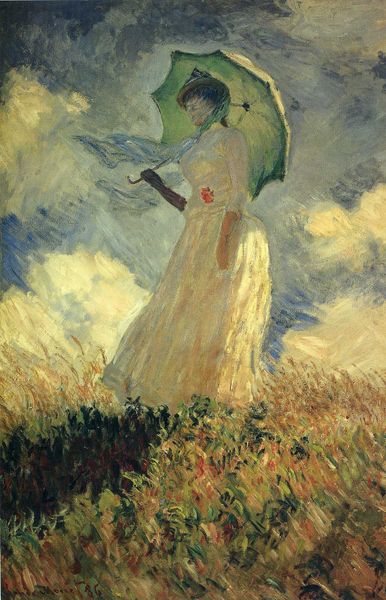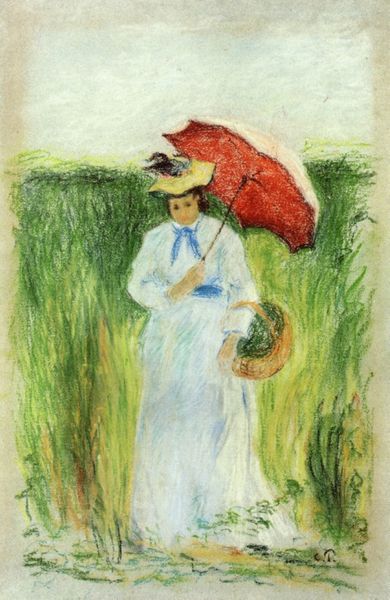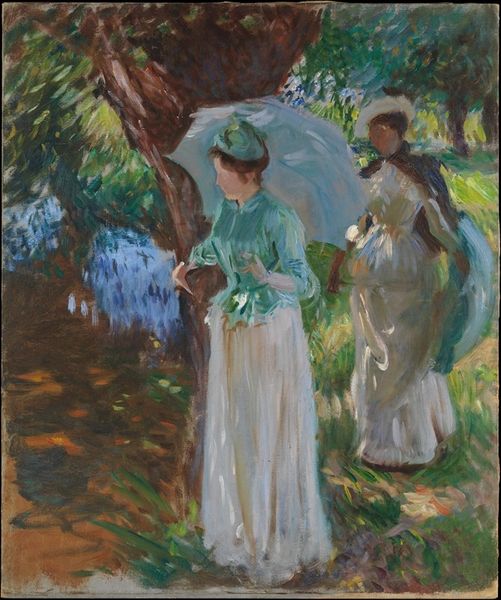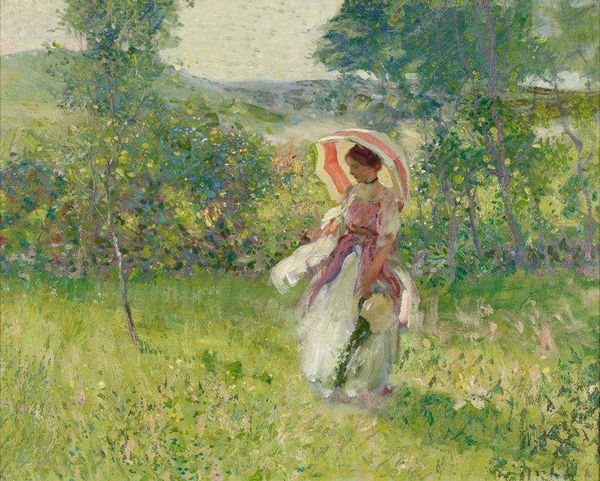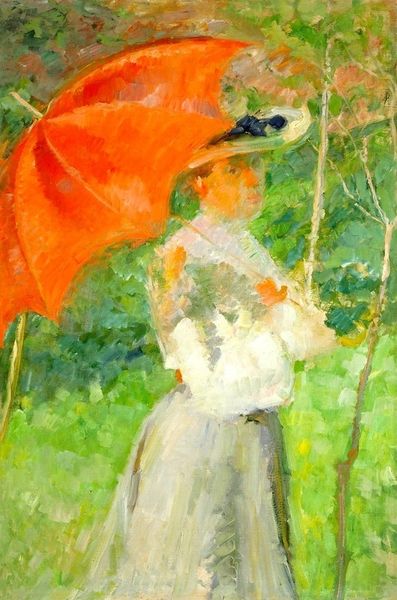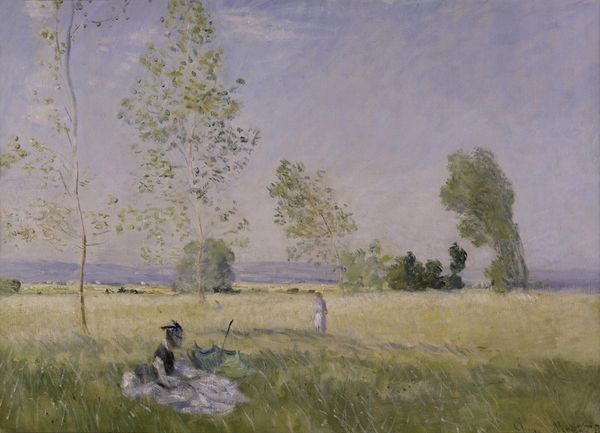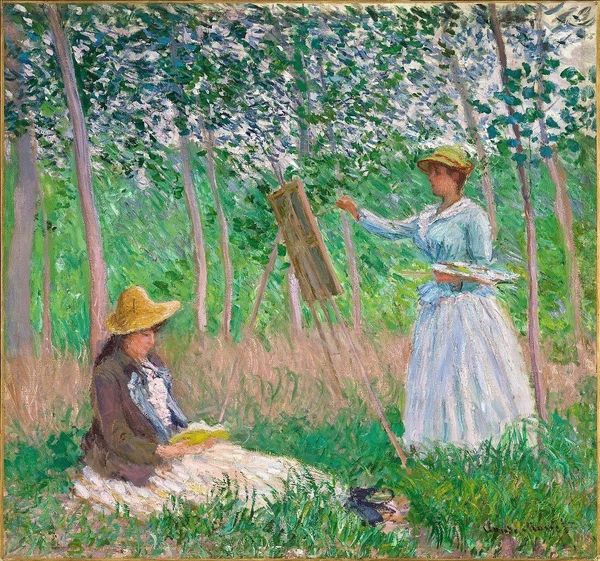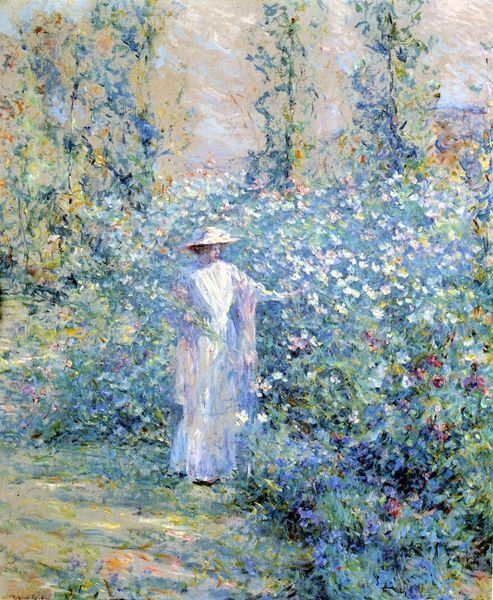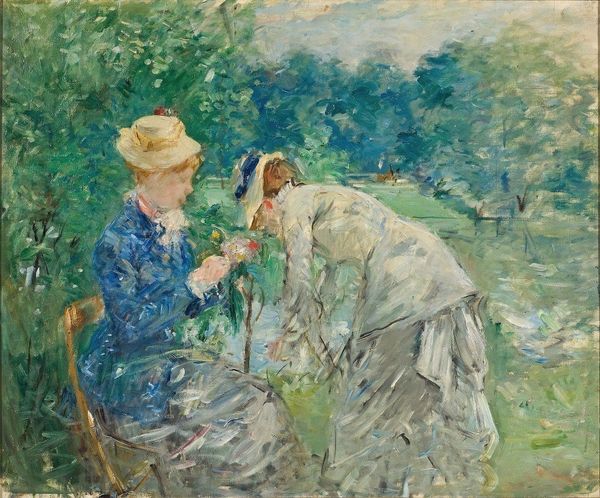
painting, plein-air, oil-paint
#
portrait
#
painting
#
impressionism
#
plein-air
#
oil-paint
#
landscape
#
oil painting
#
genre-painting
Copyright: Public Domain: Artvee
Curator: Claude Monet’s "Woman with a Parasol – Madame Monet and Her Son," painted in 1875, presents a captivating depiction of leisure en plein air, rendered in oil on canvas. Editor: My initial reaction is one of airy lightness, like a breezy summer afternoon. The brushstrokes give everything a sense of movement. The parasol really draws the eye. Curator: Indeed, the parasol is a potent symbol. It speaks to ideals of feminine grace and domesticity prevalent in 19th-century France, a visual signifier of status and protection from the elements but also a barrier between her and the working classes, an artifice in the otherwise “natural” scene. Consider also the manufacturing processes involved in its creation: the fabric weaving, the metalwork for the frame. This small detail encapsulates broader issues of consumption. Editor: And yet, Monet presents it in a decidedly informal way, as if caught mid-stride, suggesting a more spontaneous and natural vision of motherhood. I'm drawn to the color green here. Look how Monet balances green with a pastel color, echoing themes of nature, hope and the domestic sphere. And the way she’s positioned against the sky—it's almost an angelic portrait, with a classical pyramidal composition, like a Renaissance Madonna, further idealizing her role. Curator: It's also essential to understand the socio-economic implications of his painting technique. This was not the painting style of the academic studios; instead, it was deliberately sketchy and quickly rendered outdoors. Monet was part of the Impressionist movement in 1870s France. This was partly driven by the relatively recent advent of manufactured paints in tubes. Which made outdoor work far easier than ever before. Editor: So, you're seeing a connection between industrialization and his art. Curator: Precisely. Mass-produced materials made this type of impressionistic aesthetic and plein-air process more widely feasible, enabling artists to produce and deliver images far quicker than they ever could before, and that, inevitably changed the marketplace. Editor: That's interesting. I remain more fascinated by the figure of the woman – her relationship to the light, the associations with protection and maternal love. I will see symbols wherever I go. It is how our culture speaks. Curator: Agreed, symbols matter. Yet so do material conditions that bring forth such beautiful artistic creations in the first place. Editor: Yes, a reminder that these visions of seemingly spontaneous joy come about only through a complex blend of industry, artistry and, of course, a compelling, enigmatic beauty.
Comments
No comments
Be the first to comment and join the conversation on the ultimate creative platform.

